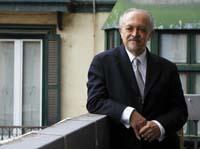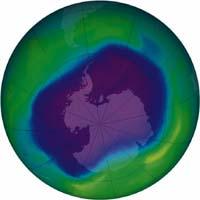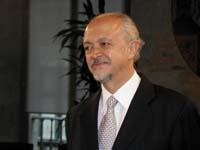Mario Molina: "The Nobel Prize has allowed me to influence public policies"

For on the one hand, it is an honor and I consider myself very recognized for having received this award, I feel recognized. On the other hand, I see the need to make society aware of some problems we have. Therefore, I must contribute, as far as possible, to spreading these problems and their solutions. Thanks to the Nobel Prize I have been involved with important officials from different governments and have influenced public policies… this aspect is very positive.
The negative might be that I can't do everything, that I have to limit my activity. It's very attractive to try to do everything, but I don't have enough time. Also, sometimes people believe that I know everything, that I am an expert in all problems and I have to explain that it is not so.
Comrade Jim Lovelock made several measurements and noted that CFCs were accumulating in the atmosphere in measurable amounts of these gases that were not produced naturally. They were very stable and could be measured in the atmosphere of the entire planet. Faced with this situation, my colleague Sherry Rowland and I asked us a question: What could we do to remove these compounds from the atmosphere? Although they were very stable, we could not leave them forever in the atmosphere. We suspected that, although not directly, the accumulation of CFCs in the atmosphere affected the ozone layer hole.
When we begin to do so, we discover the impact of these products on the stratosphere. In addition, we now know that these gases absorb infrared light, that is, they are greenhouse gases and influence climate change.
The first obstacle to overcome was to communicate the problem to society. In the first attempts society showed no interest, as the media never cared about the ozone layer, ultraviolet rays or CFCs. They are all invisible things, so it was an esoteric subject. Gradually, we got the attention of the media. Representatives of several governments, especially in the United States, questioned in part the desirability of using these compounds as propellants of aerosol packaging. That was the first step they took, banning the use of CFCs in aerosol packaging in the United States and Canada.
However, aerosol packaging was not enough to solve the problem. At least ten years passed without a significant movement being noticed. During this time, international scientists collaborate continuously.

After this work, we made a second attempt to conclude an international agreement. The pioneers were the United States, which showed no interest in the early years. When they saw the problem clear, that is, when they saw that the ozone layer was disappearing very quickly, we saw an important change of attitude. Europe, the United States, Japan… in short, all developed countries agreed and began to solve the problem.
The next obstacle was to guess how to integrate developing countries into this agreement. The problem was that these countries feared that their development would slow with the adoption of agreed measures. Finally, the proposal was accepted, on the one hand, for the need to protect the Earth and on the other, for the transfer of money, that is, those countries received a grant to adapt to this change.
I have mentioned this because it is very important also in terms of climate change, something like this we have to do if we want to solve the problem we have now.
Until the previous year, all efforts failed, taking very few steps outside the Kyoto protocol. Europe, Canada and Japan opted for the Kyoto protocol, but the United States and developing countries did not. It must be said that the first step of the Kyoto Protocol did not say that developing countries should do anything special. This was designed, since the objective was for developed countries to present superiority and anticipate themselves. The United States did not want to.
However, this year there has been a major change, accumulating scientific evidence and economic research. All of them indicate that there are solutions that are possible and that their adoption will be much more effective, since the adoption of these measures is cheaper than the payment of what we must pay to repair the damages.
The advance of this year, however, has been the first step they have taken, we can say that we are in an initial phase. Europe is still a pioneer, but I believe that in the United States very positive gestures are being made. In a few years, the United States may be the leader in solving the problem.

I think it's positive. So far many people had not heard of the problem and today, in many developing countries, there is no awareness, we have to work harder to raise awareness.
The truth is that the media has a responsibility to report correctly, they have to know how to communicate the problem. They should not be represented as a catastrophe or an apocalypse, as a problem without solution. Instead, they should indicate that problems can be solved.
However, they must also publicize their possible consequences. They cannot hide the problem. But disproportionate expressions must be avoided. Scientists are very moderate, they have always talked about probabilities.
Scientists have certainly not said that humans have caused these changes. However, the opposition of some scientists does not seem to me a sensible mentality, we would not have to go into that danger. Those who think so today have not collected enough information.
Buletina
Bidali zure helbide elektronikoa eta jaso asteroko buletina zure sarrera-ontzian











